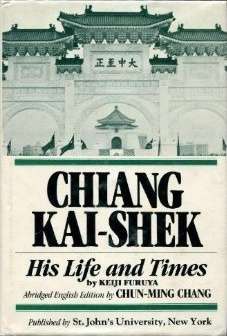
Chiang Kai-Shek: His Life and Times
Check my rate
| Main centres: | 1-3 business days |
| Regional areas: | 3-4 business days |
| Remote areas: | 3-5 business days |

| Main centres: | 1-3 business days |
| Regional areas: | 3-4 business days |
| Remote areas: | 3-5 business days |
Published by St. John's University, 1981, hardcover, index, 978 pages, some edgewear to dust-jacket otherwise condition:basically as new.
One unique feature of newspapers in the Orient, which Americans find hard to imagine, is the serialized story, in terms not just days or weeks, but months and years.
Sho Kai-seki Hiroku (From the Private Files of Chiang Kai-shek) is such a story. It had been running about 1,000 words daily in Sankei Shimbun, one of the four largest newspapers in Japan, from August 15, 1974 to the end of 1976. It was subsequently collected in 15 bound volumes, totaling 1.8 million words.
Sankei first got the idea of doing the story in May 1973, to be based on material from Chinese and Japanese government and private files, as a look at the single Chinese who had exerted the most influence on Japan's destiny in the 20th century. In February of the following year, Sankei set up a special editorial office in Taipei, headed by Keiji Furuya, a member of its editorial board. He was assisted by four writers and a deputy editor of the newspaper's photo department.
In the writing of this work, the authors were given access to Chiang's personal files, his diaries and other unpublished papers, as well as Chinese government archives. It is for this reason that the work in Japanese is entitled "From the Private Files of Chiang Kai-shek."
This abridged English edition is not, of course, an adequate substitute for the original Japanese work. In making the abridgment, scrupulous care has been taken to preserve intact the spirit and flavor of the Japanese text. The editor has deleted those parts of the work which has little or nothing to do with Chiang Kai-shek but may be of interest to students fo Sino-Japanese relatios. He has also allowed himself to interpolate, here and there, sentences and even paragraphs by way of elucidation. These intrusions are of minor significance; they relate to matters which are perfectly clear to Japanese and Chinese readers but not so clear to Westerners. The factual data, the interpretations, and the broad conclusions belong to the authors alone and have not been affected by the abridgment.